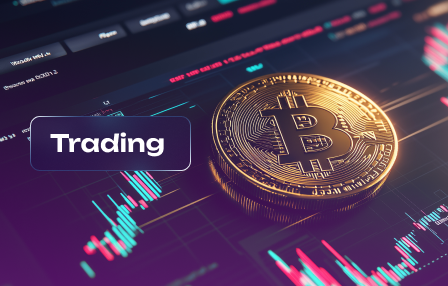Why OTC Trading Is Essential for Institutional Investors
March 21, 2025
Maximizing liquidity and flexibility is paramount for asset managers seeking enhanced efficiency in diverse financial landscapes. Engaging in over-the-counter mechanisms allows participants to tailor their transactions, accommodating specific requirements while minimizing market impact.
Market players gain access to a broader array of assets, enabling strategic diversification. This method fosters transparency by facilitating direct negotiations, which can lead to better pricing compared to traditional venues. The ability to customize trades enhances operational agility, allowing firms to respond swiftly to evolving conditions.
Moreover, utilizing these platforms often results in lower costs associated with execution, as intermediaries are reduced or eliminated. By leveraging such opportunities, capital allocators can optimize their portfolios while ensuring compliance with regulatory frameworks. Thus, integrating alternative market strategies proves advantageous in today’s competitive environment.
Understanding OTC Market Mechanics
Maximize flexibility by leveraging over-the-counter environments. Investors gain direct access to a broader range of assets, often bypassing conventional exchanges. This allows for tailored transactions that align with specific investment strategies.
Liquidity in these markets is vital. Participants can execute larger trades without significantly impacting asset prices, enhancing overall efficiency. This is particularly advantageous for institutional players looking to manage substantial portfolios while minimizing market disruption.
Utilize the advantages of reduced counterparty risk through established relationships with trusted dealers. These connections facilitate smoother negotiations and improve trade execution timelines.
Monitor the bid-ask spreads closely. OTC markets typically offer tighter spreads on less liquid instruments, which can lead to cost savings over time. Implementing strategic timing in executions can further optimize outcomes.
Embrace technological advancements, such as algorithmic trading and blockchain solutions, to streamline processes and enhance transparency. This integration fosters confidence and encourages participation from more conservative investors.
Risk Management in OTC Trading
Implement robust due diligence protocols to assess counterparty risk. Ensure thorough evaluation of the financial health and creditworthiness of participants, which can mitigate potential losses significantly.
Utilize customized pricing models that reflect market conditions, enhancing negotiation power and optimizing trade execution. Regularly adjust these models based on historical data to maintain accuracy and reliability.
Incorporate advanced risk assessment tools such as Value at Risk (VaR) and Stress Testing methodologies. These techniques provide insights into potential vulnerabilities, enabling informed decision-making during volatile periods.
Diversify portfolios by engaging with multiple trading partners. This strategy enhances liquidity access while minimizing exposure to individual counterparties, ultimately lowering systemic risk within the trading environment.
Establish clear internal policies regarding limits on trade sizes and types. Implementing these restrictions helps maintain control over liquidity risks and ensures alignment with overall investment strategies.
Leverage technology-driven solutions for real-time monitoring and reporting of trades. Transparency facilitates better risk management practices, allowing for quick adjustments based on emerging market trends.
Engage in regular scenario analysis to prepare for different market conditions. Anticipating potential challenges enables proactive management, safeguarding portfolios against unforeseen shifts in the economic landscape.
Formulate exit strategies before entering trades. Having predefined criteria for unwinding positions can protect against adverse price movements and enhance overall portfolio resilience.
Liquidity Benefits for Institutions
Maximize liquidity through tailored strategies that enhance transaction efficiency. This approach allows entities to execute larger volumes without significantly impacting market prices.
- Customizable Execution: Leverage bespoke arrangements with counterparties to meet specific liquidity needs, offering flexibility during volatile periods.
- Reduced Market Impact: Conduct transactions discreetly to maintain favorable pricing, as larger trades can create adverse price movements in conventional markets.
- Access to Diverse Assets: Explore a wider array of financial instruments not always available on traditional exchanges, ensuring a broader investment scope.
Utilize advanced algorithms and data analytics to monitor real-time market conditions. This enables proactive adjustments to trading strategies based on liquidity levels.
- Transparency: Aim for clarity in trade reporting, which enhances trust among participants and attracts additional liquidity.
- Counterparty Diversification: Engage with multiple brokers and dealers to mitigate risks associated with reliance on single sources, thus enhancing overall liquidity access.
Consider using block trading options to consolidate large orders, allowing for improved execution prices while minimizing the exposure of trading intentions.
- Strategic Timing: Align order placements with optimal market conditions identified through analytical tools, increasing the likelihood of favorable outcomes.
- Regular Assessment: Continuously evaluate liquidity positions and adapt strategies as necessary to address changing market dynamics.
Incorporating these practices ensures robust liquidity management, ultimately leading to superior returns and risk mitigation for asset managers. Prioritize agility and strategic foresight in every transaction for lasting advantages.
Price Discovery and Transparency
Establishing clear price discovery mechanisms is paramount for market participants. Accurate pricing reflects true supply and demand dynamics, which promotes trust among market players. Institutions benefit from enhanced transparency, allowing them to make informed decisions.
Access to real-time pricing data from multiple sources contributes to this transparency. Utilizing advanced analytics tools can help investors gauge market sentiment and identify trends. Institutions should prioritize platforms that offer comprehensive data aggregation to ensure they have the most accurate information at their fingertips.
Flexibility in choosing trading counterparts also enhances price discovery. Engaging with multiple liquidity providers allows institutions to negotiate better terms, fostering competitive pricing. This approach mitigates the risk of adverse selections, leading to a more stable trading environment.
Encouraging a culture of transparency within networks will ultimately build stronger relationships among participants. Institutions that actively promote open communication about pricing and trade execution will pave the way for more robust market infrastructure.
Regulatory Considerations for Investors
Understanding legal frameworks is crucial. Compliance with regulations can enhance credibility and facilitate smoother transactions. Investors must familiarize themselves with key legislation affecting market operations, including AML (Anti-Money Laundering) and KYC (Know Your Customer) protocols.
Flexibility in structuring deals often comes at a regulatory cost. It’s essential to engage with compliance experts who can navigate the complexities of local and international laws. This will help mitigate risks associated with potential sanctions or non-compliance penalties.
Access to information about market participants contributes to transparency. Investors should assess the reliability of counterparties by evaluating their regulatory standing. Engaging with reputable firms can minimize counterparty risk.
Utilizing advanced technology can streamline efficiency in adhering to regulatory requirements. Automated reporting systems assist in maintaining accurate records and ensuring timely submissions, thus reducing administrative burdens.
Regularly reviewing changes in regulations is vital. Market environments shift, making it necessary to adapt strategies accordingly. Establishing a dedicated team to monitor regulatory updates ensures that investment practices remain compliant and aligned with best practices.
Lastly, fostering relationships with regulatory bodies can provide insights into upcoming changes, allowing proactive adjustments. Being informed enhances strategic positioning in the marketplace while safeguarding against unforeseen regulatory challenges.



